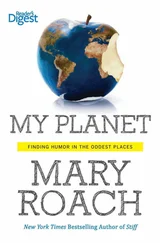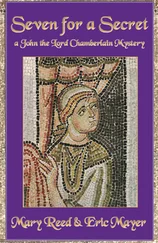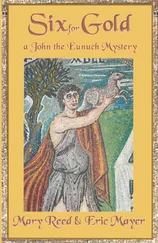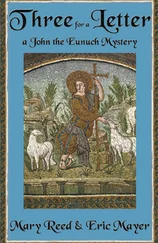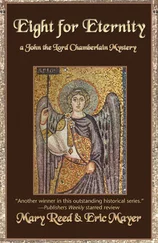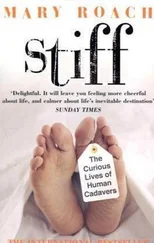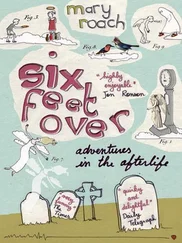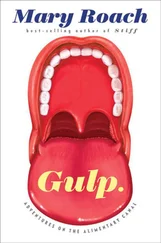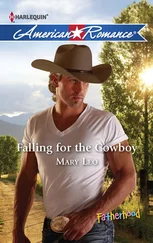The story, as stories will, grew and mutated with each retelling, until Enos was having the world’s first orbital orgasm and then coming back down and brazenly masturbating in front of a sea of clicking cameras and exploding flashbulbs.
Here is the opening of the story the AP reporter filed after attending the infamous postsplashdown press conference in Bermuda. “Holding his first public audience since returning from outer space, the Holloman Air Force–trained chimpanaut refused Thursday to do even a cartwheel for newsmen at his press conference. ‘He’s really quite a cool guy and not the performing type at all,’ said Captain Jerry Fineg.”
Enos, your name is cleared.
A BLOW-DRYER wind has knocked over the flowers on Ham’s grave. I’m out here squinting in the noon sun, eating a sandwich and thawing out after a morning in the museum’s aggressively air-conditioned archives. Now I know the story behind the plaque. The same confusion that surrounded Ham while he was alive continued when he died. The International Space Hall of Fame was bombarded (their wording) by inquiries from the media and the public about the fate of his remains. It was something of a quandary. What’s appropriate protocol for a dead space chimp? Memorial service or incinerator?
The Air Force’s position was made clear in a draft of a letter by a Colonel William Cowan: Ham was a historical artifact. Cowan, repeatedly referring to Ham’s remains as “the carcass,” recommended that following the necropsy (the animal version of an autopsy), the skeleton be removed from the body and cleaned of flesh in the Smithsonian’s dermestid beetle colony and then sent to the Armed Forces Institute of Pathology archives.
Ham’s hide had already been removed, in case the Smithsonian wished to prepare a taxidermied specimen. This seemed like a bad idea to me. I saw a photograph of Ham taken ten years after his flight. He had gained more than a hundred pounds over the course of his retirement and lost some of his teeth. Others protruded at unfetching angles. He was unrecognizable as the flight-suited, pink-faced youngster from the Life cover. He looked like Ernest Borgnine.
But no one asked my opinion. The Smithsonian announced plans to stuff Ham and add him to “the indoor Ham exhibit” at the International Space Hall of Fame, an exhibit that consisted at that time of “a photo of Ham.” The public went bonkers. The archives has a few of the letters. “Gentlemen: Ham is a national hero and not a thing…. Do you propose to stuff John Glenn as well?” “A chimpanzee is not a stuffed pepper.” Et cetera. The Washington Post, under the inevitable “The Wrong Stuff” headline, took the nation’s indignation a step further in an op-ed that insinuated Communist proclivities on the part of the Smithsonian. “The only national heroes we can think of who are stuffed and on permanent display are V. I. Lenin and Mao Tse-tung.” (In keeping with the Communist proclivity for stuffing heroes, Soviet space dogs Belka and Strelka stand side by side in glass cases in Moscow’s Memorial Museum of Cosmonautics, faces raised as though staring at the heavens or anticipating a treat.)
A follow-up announcement was quickly drafted. Ham would not be stuffed. He would be given “a hero’s burial” in a small plot in front of the Hall of Fame flagpoles, “similar to the final resting place of Smokey the Bear.” [46] Curiously, also situated in New Mexico. The Smokey plot does not contain the remains of the Forest Service mascot, who is a cartoon, but of a black bear cub burned in a New Mexico fire and named after the mascot. Confusion surrounds the official mascot name, which is Smokey Bear, not Smokey the Bear. Just as the official slogan of New Mexico is Land of Enchantment, not Land of Pants-Wearing-Animal Memorials.
What remained of Ham following a necropsy, a skeleton extraction, and the removal of his hide is difficult to imagine. Whatever it is, one has to assume, is what’s down there under the flowers.
The museum now had to come up with a suitable memorial service. They needed a respected public figure willing to say a few words about Ham’s contributions to manned space exploration in the United States. Clearly heat-struck, their public relations person sent off a letter to notable Ham detractor Alan Shepard. The letter pointed out that Shepard would enjoy “national attention from all areas of the media.” As though Alan Shepard, the first American man in space, wanted or needed media attention. In particular, at an event that would yet again have him sharing the spotlight with a chimp. The letter-writer acknowledged the “jokes and sometimes ‘unfunny’ humor about the situation.” The quotation marks were an ill-advised touch, seeming to suggest that the letter-writer herself found the jokes funny.
A reply arrived on letterhead from the Texas-based Coors distributorship where Shepard served as president, thanking the museum for the “thoughtful invitation” and expressing regrets. The letter was typed by Shepard’s secretary, initials JC. There was no signature. Undiscouraged, the Hall of Fame public relations staff next went after John Glenn, by this time not just an astronaut but a senator and a presidential candidate. Glenn politely declined, citing previous commitments.
A brief news story on the ceremony ran in the Albuquerque Journal . A photograph accompanying the article showed a loose crowd of maybe forty people standing around the flagpole area. “Colonel Stapp made a short speech and members of Girl Scout Troop 34 of Alamogordo laid a wreath on a small memorial plaque.” Stapp ran the crash sled research program at Holloman Air Force Base. In both aerospace and automotive safety studies, Holloman chimps were regularly used in impacts deemed too hazardous for airmen. Which made Stapp both an appropriate and inappropriate choice. He was intimately familiar with the heroic sacrifices of man’s closest cousin; he’d signed the paperwork on most of those sacrifices himself. The tribute was respectful, if short on sentiment [47] Not that Stapp was unsentimental. The colonel composed sonnets and love poems for his wife Lillian, a ballerina with the American Ballet Theatre. They’re included in a collection of Stapp’s verse, on sale for $5 in the New Mexico Museum of Space History gift shop. Stapp didn’t read from his oeuvre at Ham’s service, though one line in particular would have fit the occasion: “If chimpanzees could talk, we would soon wish they wouldn’t.”
—one of those rare eulogies to incorporate numeric G force figures.
Enos had no memorial. A log book of Holloman chimp acquisitions [48] Ham is entered twice, initially as “Chang,” and later as “Ham” (an acronym of Holloman Aeromedical). Once the animal had been chosen as a finalist to fly, government officials rethought the name, worrying that an ape named Chang might offend the Chinese. To be on the safe side, chimps were thereafter named for Holloman staff or, in the case of Double Ugly, Miss Priss, Big Mean, and Big Ears, themselves.
includes the note “remains at Smithsonian,” though no one there seems to know where he ended up. Animals in Space author Chris Dubbs spoke to someone whose mother had dissected Enos’s eyes to study the effects of cosmic radiation, but the man knew nothing about the rest of the chimp. This suggests that the body was parceled out for research. Which is the usual and appropriate fate of a research subject.
For better or worse, that’s what Ham and Enos were. They played a vital role in the country’s space efforts, but I would not use the term “heroes.” For the simple reason that no bravery was involved in what they did. A courageous feat is one undertaken with an understanding of the dangers involved. As far as Ham knew, January 31, 1961, was just another strange day in the little metal room. Alan Shepard may not have been using the expertise of a test pilot, but he was certainly using the guts. He let himself be strapped in a canister on the nose of a missile and blasted into space: an insanely dangerous feat undertaken by, at that point, only one other man.
Читать дальше

